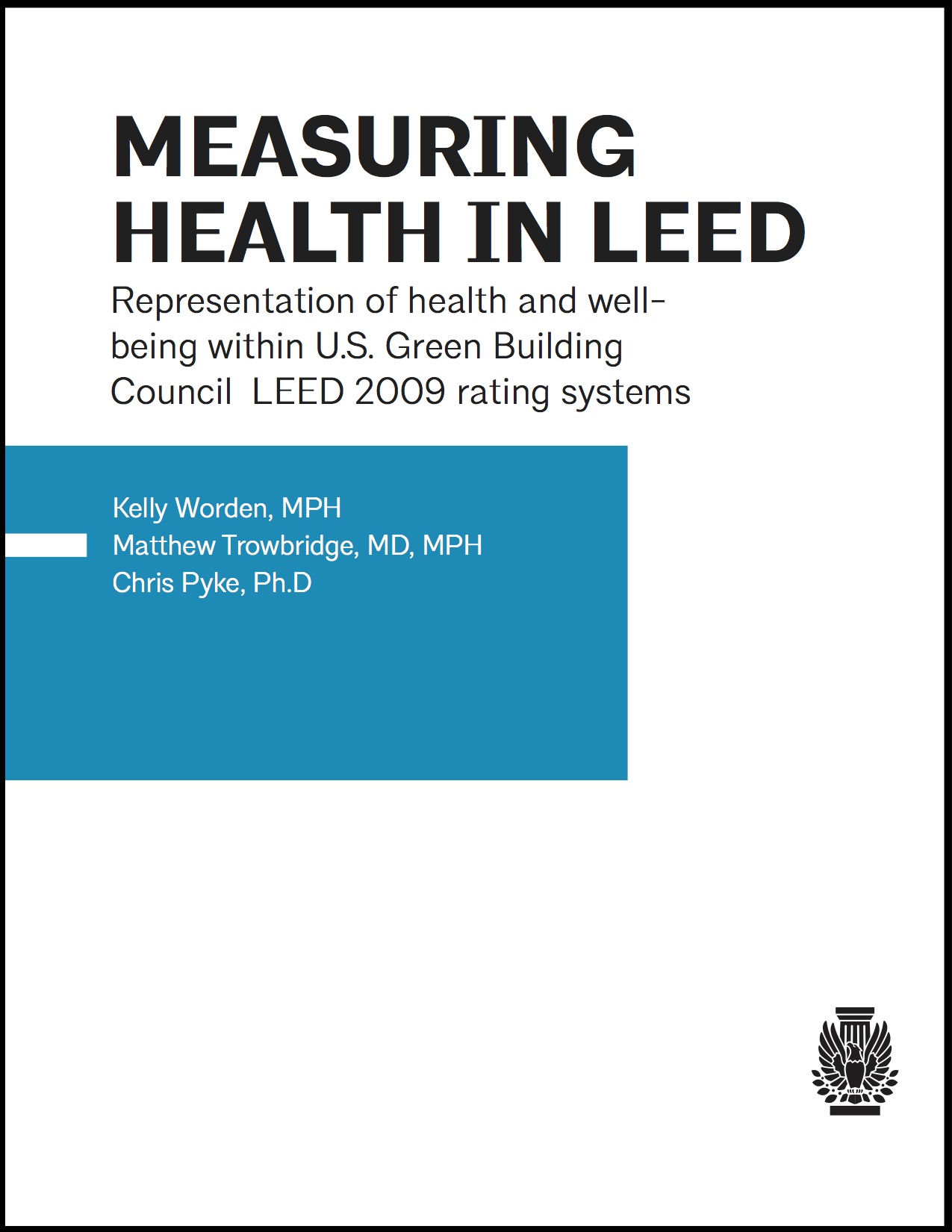Code Green Solutions


Last year, we shared a preview of ongoing research funded by the Robert Wood Johnson Foundation (RWJF) on the representation of health and well-being within LEED 2009. As previously described, a ‘Green Health’ partnership was launched in 2012 between the U.S. Green Building Council (USGBC), RWJF and the University of Virginia School of Medicine focused on leveraging the market transformation capacity of green building to accelerate innovation and translation of built environment and health research within the real estate industry.

One goal of this on-going collaboration is to increase use and availability of health-focused credits within green building certification systems, such as USGBC’s widely used Leadership in Energy and Environmental Design (LEED) platform. Towards this end, a study submitted to the American Institute of Architects (AIA) Design and Health Summit aims to a) identify and inventory health-focused credits across LEED 2009 rating systems and b) analyze the existing ‘representation’ of health within LEED by examining the language used to describe health-related issues.
The study found that health, well-being, and enhanced occupant experience are expected outcomes from many green building strategies and health-related intentions are common throughout LEED rating systems. However, language used in LEED 2009 to describe these intentions and strategies is diverse, sometimes inconsistent, and potentially difficult to link to public health practice. Additionally, public health domains currently addressed by LEED 2009 are limited in scope.
In the study, we suggest specific areas for improvement to strengthen connections between health intentions and outcomes and to utilize specific terminology that aligns more closely with concepts used in the public health community. Ultimately, these kinds of changes will make it easier to understand and achieve the long-standing aspirations for buildings that promote human health, contribute to physical, emotional and social well-being, and provide superior occupant experience. In the near term, we hope results of this analysis help inter-disciplinary stakeholders more easily identify and use currently available health-related credits within LEED and facilitate discussions regarding potential future directions for its development with regard to the development of expanded health-related resources.
Find links to the AIA report and the list of identified health-related credits within the Resources section below.